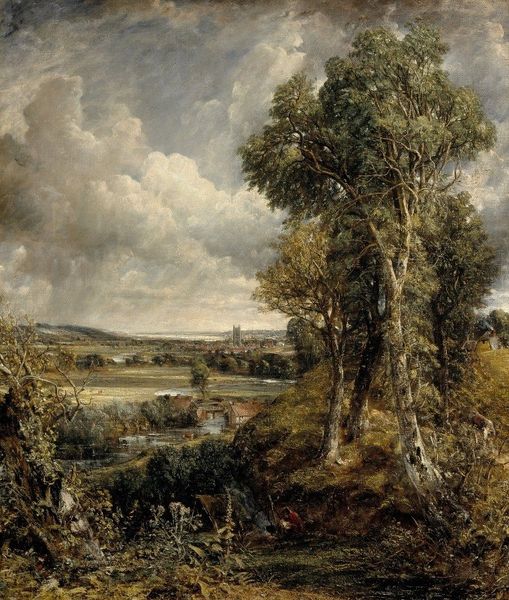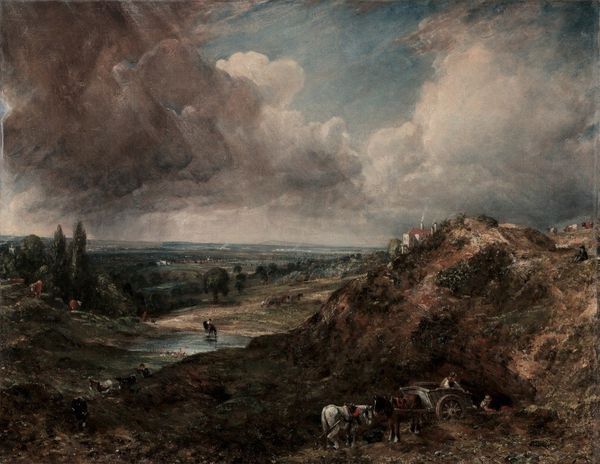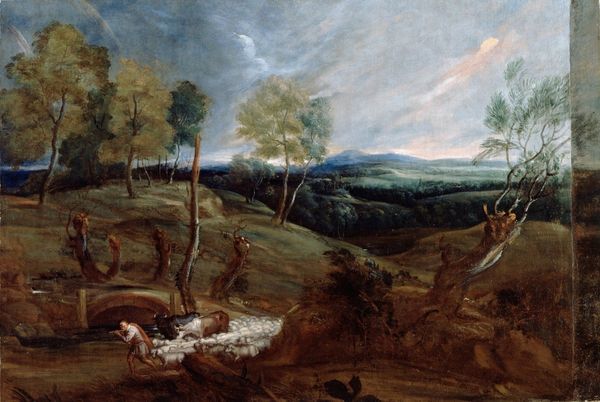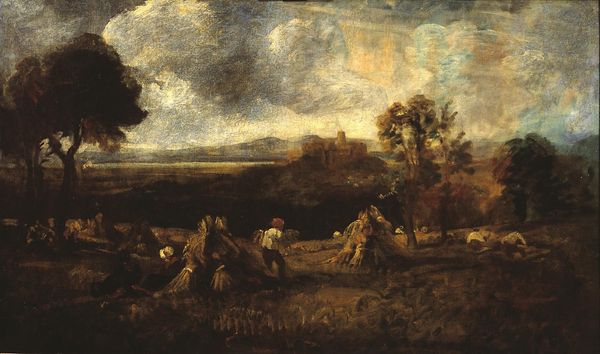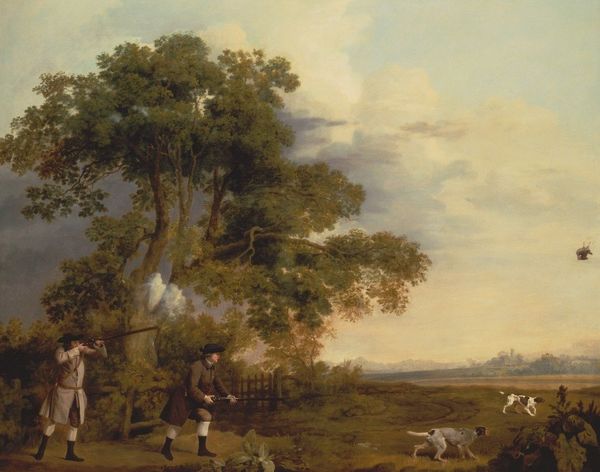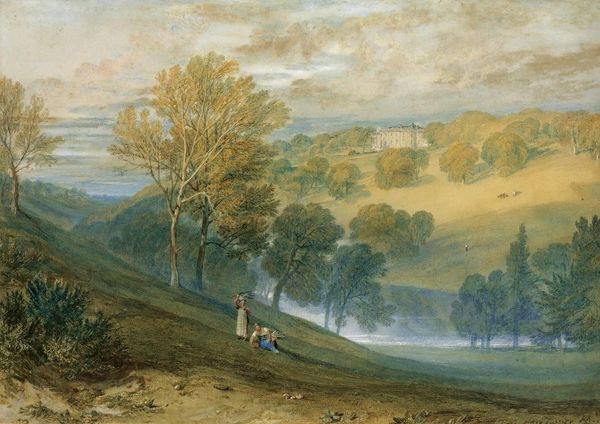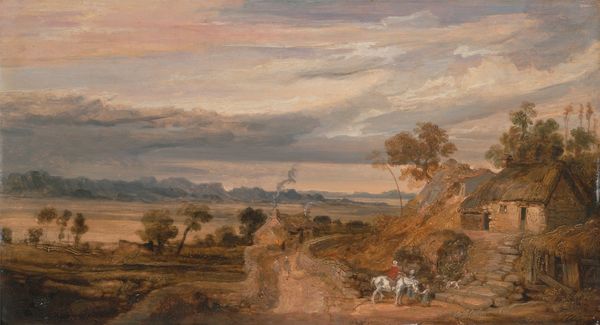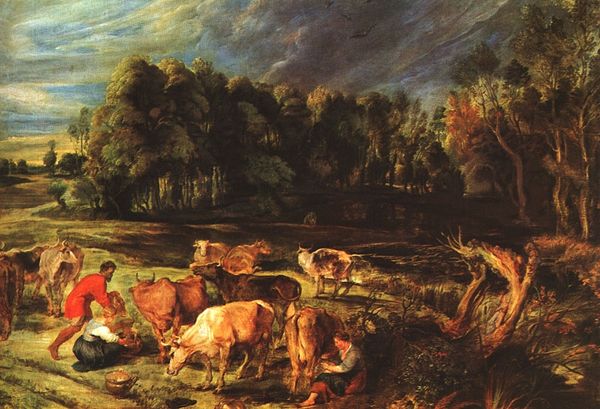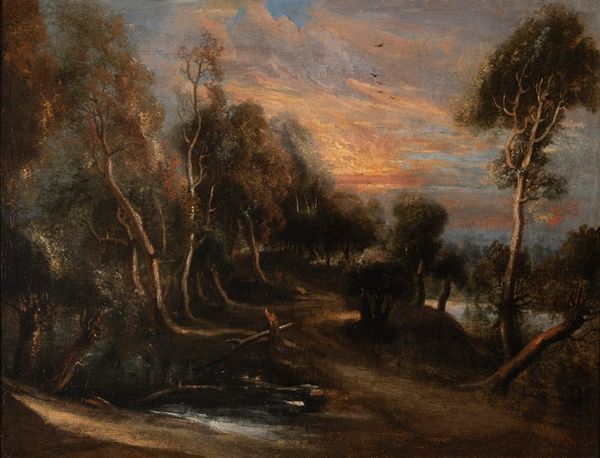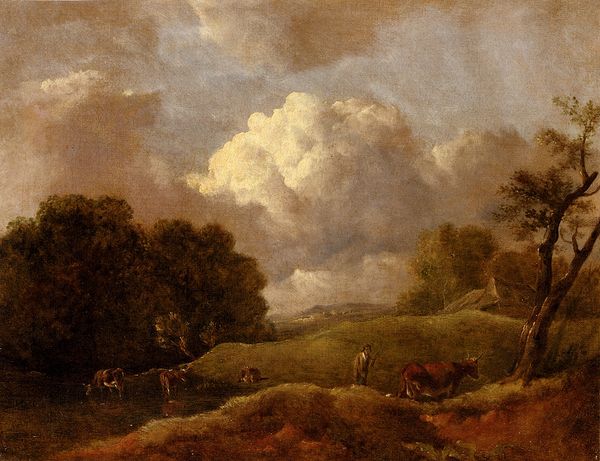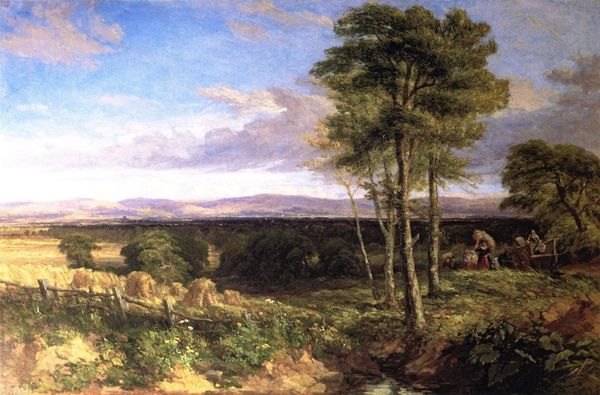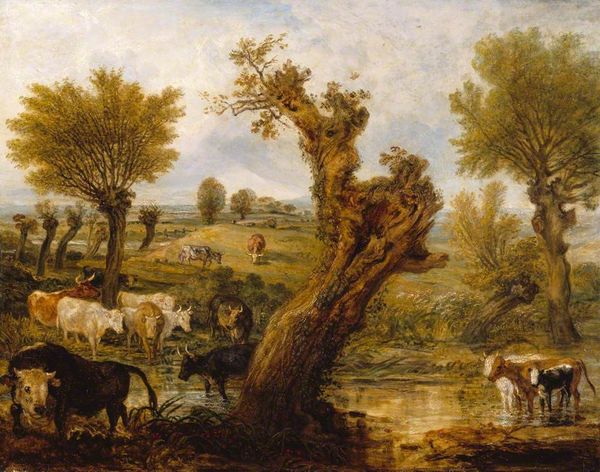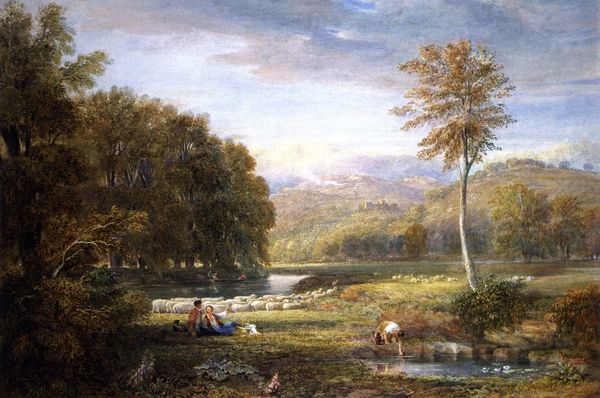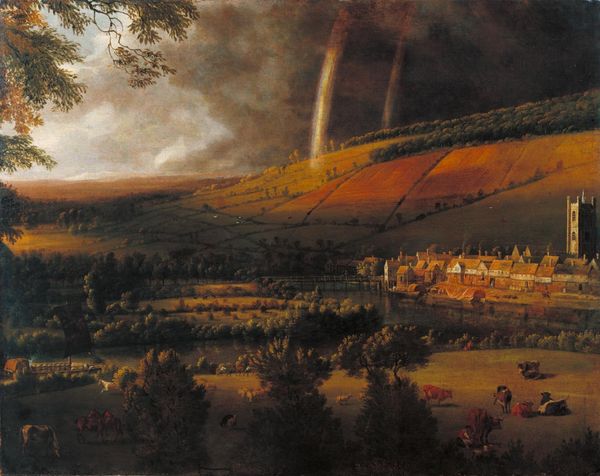
painting, oil-paint
#
baroque
#
painting
#
oil-paint
#
landscape
#
oil painting
#
flemish
#
history-painting
#
realism
Copyright: Public Domain: Artvee
Curator: Look at "The Rainbow Landscape" painted around 1636 by Peter Paul Rubens, a stunning example of Flemish Baroque landscape painting. Editor: Wow. It's instantly calming, isn't it? The vastness mixed with those small human and animal figures... There's a sort of dreamy reverence, and those ducks in the foreground are a sweet touch! Curator: Consider Rubens’ access to the raw materials; the cost of the pigments, the canvas preparation—everything signals a patron of significant wealth, someone capable of supporting his artistic endeavors and accessing his networks for distribution. It isn't your average farm! Editor: True, but beyond the socio-economics, for me, it speaks to something timeless. Look how the rainbow kisses the horizon; it almost feels like a promise woven into the very fabric of the scene. It evokes that beautiful moment of hope when the storm breaks and reveals something new. Don't you think? Curator: Symbolism is key here. Consider the arc of the rainbow itself. It functions not just as a pretty picture, but as a signal of nature as bound with social elements – such as the work undertaken. Editor: And it all pulls together--the light reflecting in the water, the farmers at work... all connected by this vibrant band of color. Almost making you nostalgic for a simpler way of existing that never actually existed, eh? The landscape feels alive! It’s almost tangible. Curator: Its realism has impact, yes, which may derive from studying detailed works, although from the Italian Renaissance specifically. Note the detail afforded to common labourers in amongst an Arcadian idyll: that Rubens’ landscape can afford to pay attention to material labour. It brings with it its own questions! Editor: Exactly! It prompts us to find our place in that vast tableau—somewhere between awe and the everyday grind. It asks us to stop romanticizing an image without really diving in on the labour being put to it. Not bad for a few strokes of oil paint, eh? Curator: It underlines how paintings reflect both material conditions and cultural imaginaries, each stroke shaped by tangible realities as well as artistic intention. A reminder to dig deeper than surface impressions. Editor: Indeed! After analyzing, its beautiful but to truly digest such art in totality would take some serious thinking about context, time period, resources. You definitely gave me food for thought.
Comments
No comments
Be the first to comment and join the conversation on the ultimate creative platform.
